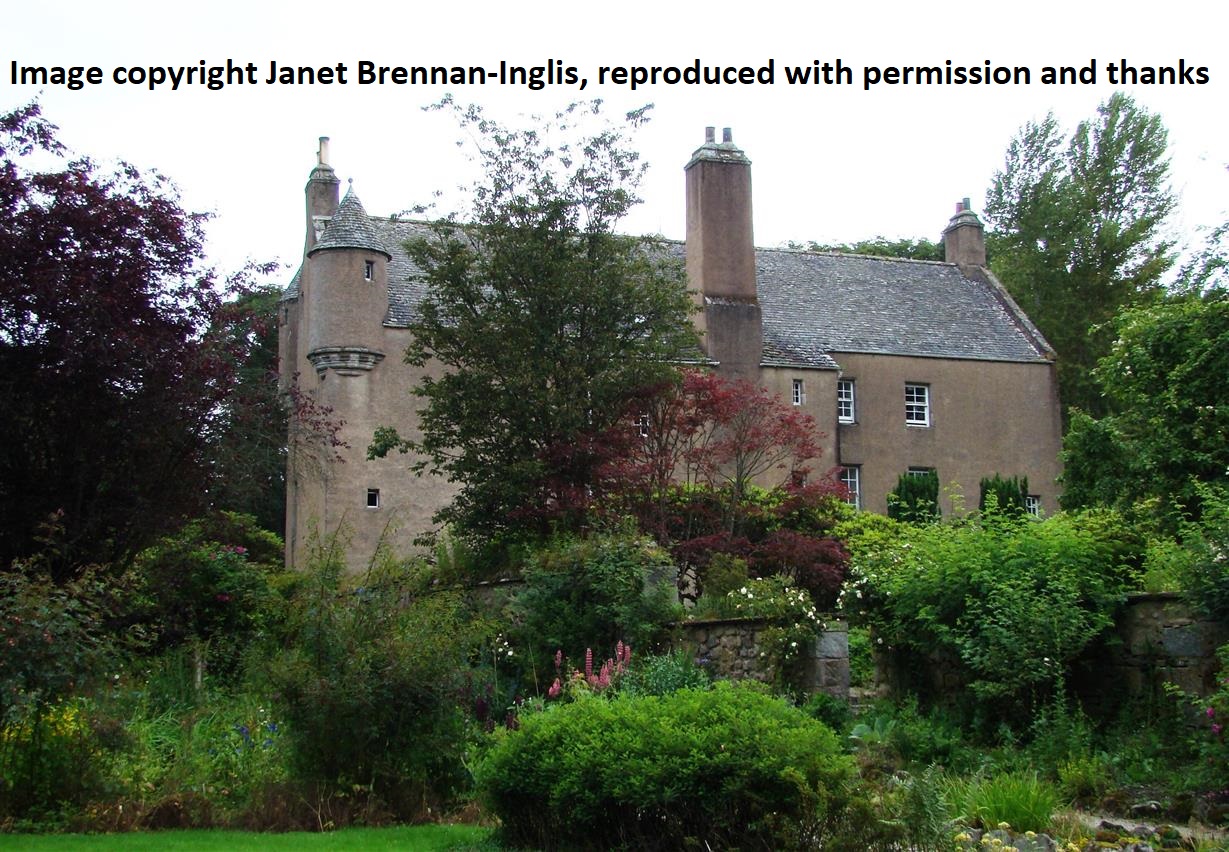Balbithan House

Balbithan House Details
Balbithan House, privately occupied and extended C17 tower house of the Chalmers family, recently for sale
- Closest To: Kintore, Inverurie, Hatton of Fintray
- Access: No Access
- Grid Reference: NJ812189
Balbithan House is a privately occupied mansion built around a tower house which is almost certainly 17th century. It occupies lands at the head of a valley now drained into the River Don by the Newmill Burn. It cannot be seen from any public roads.
The lands of Balbithan were part of the extensive Lordship of Garioch that was held by the Bruce family in the late 13th century. Some time between 1306 and 1318 they were granted to Lindores Abbey by King Robert I in exchange for other lands which had been granted to the abbey by his brother Edward. The abbey, of course, needed men to run estates like Balbithan, and by the late 15th century the lands had been leased to the Chalmers family, long-standing gentry from Inverurie and Kintore. John Chalmers of Balbithan is recorded in 1490, David Chalmers in 1565, John Chalmers in 1584, and by 1600, George Chalmers, when a building was certainly in existence according to the Register of the Great Seal. James Chalmers, “lately” of Balbithan is the last of the family on record, having presumably sold or wadset (mortgaged) the estate to John Irvine by 1627. By 1696 it was held by James Balfour, an Edinburgh merchant, but the Chalmers family remained resident, and a “new place” at Balbithan is mentioned in 1635, probably the extended or rebuilt house. During the Covenanting period, Montrose used Balbithan as a base, and it is said to have housed refugee Jacobites from Culloden, although on what grounds I am not sure!
The house itself is said to date from the late 16th century, but there is little to recall this early phase of construction. It follows an enlarged L-plan, with a rectangular tower in the re-entrant angle containing the entrance and stairs to the first and second floors. The east-west wing may contain the oldest masonry; the north wall of the kitchen, and dining room above, is notably thick, and may represent the early building. If so, it was quickly extended to the west with the addition of another room, and the original entrance removed. The somewhat awkward access into the northern portion of the north-south wing also seems to suggest something prior – but again if so the original layout is irretrievably lost. On the east wall, a projecting section contains windows and a curious stairwell – again this wall is rather thick, but does not rise to the first floor but only continues as small projecting sections. Above the main stair, a turret stair accesses a small room at third floor level, but it is likely that the rooflines have been modernised at some point, again obscuring earlier architecture. This history of the building is clearly complex and not well understood.
Become a supporter of my work to access a more detailed history